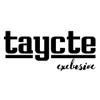To choose or not to choose? Food and beverage manufacturers walk a fine line between providing adequate product variety and overwhelming consumers with too many choices. The debate rages on whether consumers desire more product choices or are paralyzed by them, and studies demonstrate that both can be true.
But what about offering consumers more choices in product promotions?
According to a 2014 Nielsen study, more than two-thirds of promotion events across CPG departments don't break even, with promotions for food and beverage departments being among the most ineffective. CPG companies globally spend about one trillion dollars on trade promotions each year.
To improve ROI of product promotions, manufacturers have sought promotion innovations that strategically tap the psychology of choice to encourage consumers to engage with promotions and become repeat buyers. By employing a multitiered approach to product promotions, manufacturers can better personalize offers to suit the varying needs of individual consumers across demographics.
How a multitiered promotion works
A multitiered promotional campaign can take many forms, but most commonly the fluctuating variables are quantity (or weight) and price. These variables slide on a scale that ultimately rewards consumers with deeper discounts for purchasing more items. But by offering multiple levels of value to choose from, a manufacturer can hope to capture a wider range of consumers.
For example, a manufacturer may offer multitiered coupons structured as $1 off three cans of soup, $2 off five cans of soup, or $3 off six cans of soup. For some consumers, getting $1 off three cans of soup is enough to encourage a purchase. Others will prefer getting the most bang for their buck and buy more items for the deeper discount.
Not all consumers will want or need to buy in bulk to achieve the deeper discount and will be satisfied with a smaller discount on fewer items. By offering that personalization with multiple levels of discounts, manufacturers encourage consumers to engage with a promotional value that best suits their needs, according to Beth Johnson, executive director of special projects for personalized digital media company Catalina.
In Catalina’s report, "Expand Demand: Driving Efficient Volume Through Category Marketing," released earlier this year, the company found that response rates for targeted shoppers increased 44% when reward offers contained three levels of value (23%) versus only one level (16%).

This approach could better serve a manufacturer's promotional strategy rather than discourage a consumer by not offering a deep enough discount or by pressuring the consumer to buy more items than needed to obtain that discount.
"Personalization and shopper choice are not just about savings," said Johnson. "It's also about communicating to consumers in the manner in which they prefer."
Concerns surrounding multitiered promotions
One issue with multitiered promotions, Johnson said, is that they tend to favor what she calls "expandable consumption categories." These include products where buying into the higher level of a promotion carries less risk for the consumer.
"Take soup, for example — there's not a risk involved for consumers to buy that quantity to gain this reward," said Johnson. "It might be that they'll use it more in recipes. It'll drive more usage of that product."
However, for certain segment promotions, the better value could push a consumer to buy a larger quantity of a product with a shorter shelf life or less versatility. If the consumer doesn't believe that volume of the product can be used before it expires, that promotion may be abandoned altogether. Manufacturers can overcome that problem by offering a promotion option that suits individual consumption needs.
Another concern for manufacturers is that consumers might purchase a product in bulk during a promotion one time but then never become a repeat or loyal customer. Johnson said Catalina saw the opposite per research for its recent report: Twice as many consumers who responded to one of Catalina's campaigns repurchased the promoted product after the campaign was over versus non-responders.

With multitiered promotions, manufacturers don't just push volume forward — they can drive future purchases even after the promotional period is over.
Give consumers too many choices in the grocery store, and they can become overwhelmed. If manufacturers don't give consumers enough variety, shoppers will find a brand that will.
But when it comes to having choices for different promotional values, those same psychological concepts may not hold true. Consumers may become paralyzed by having too many options to spend their money on, but having more options for saving money may mobilize those same consumers.
Here manufacturers have the opportunity to innovate their promotional campaigns, improve those campaigns' ROI, and incentivize buyers to become loyal customers through personalized value propositions that help a brand stand out from the competition.
















